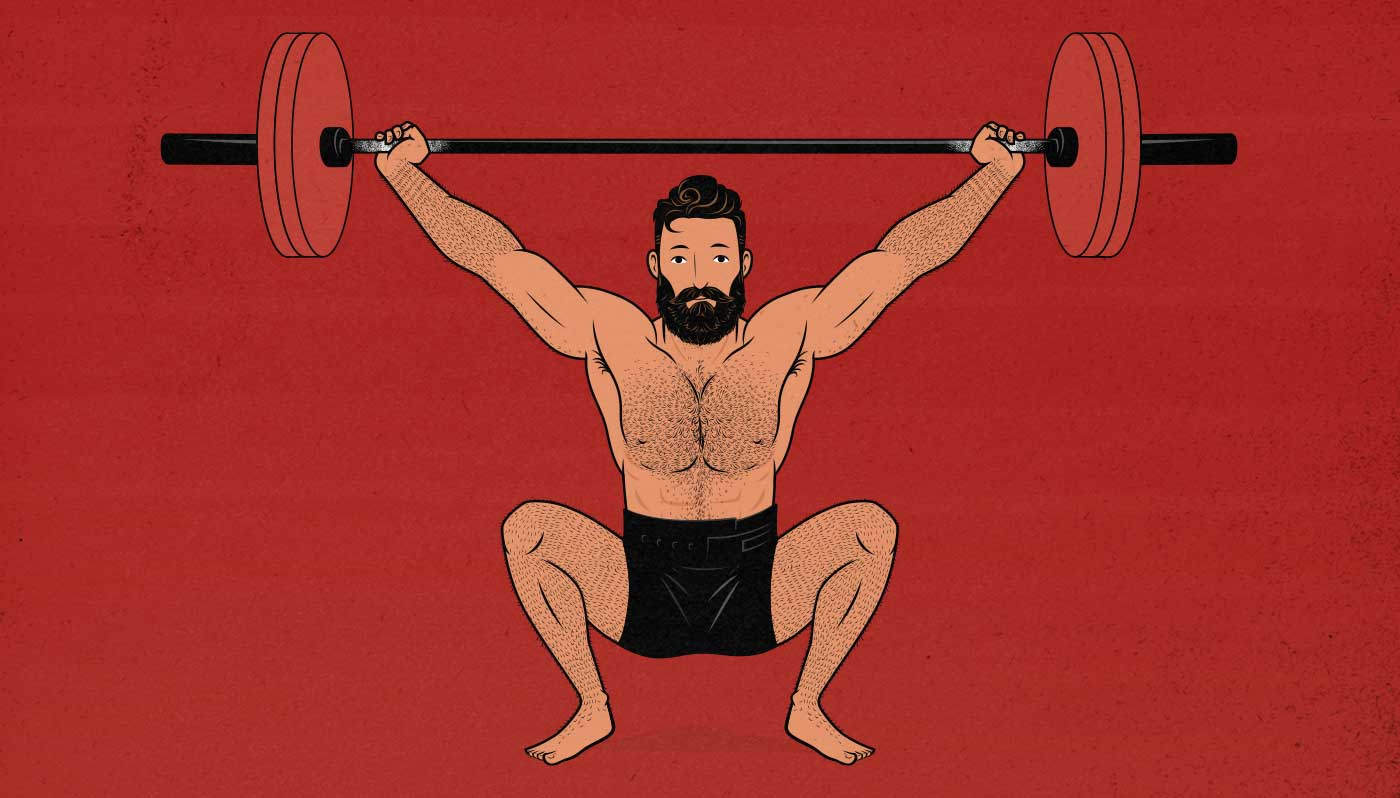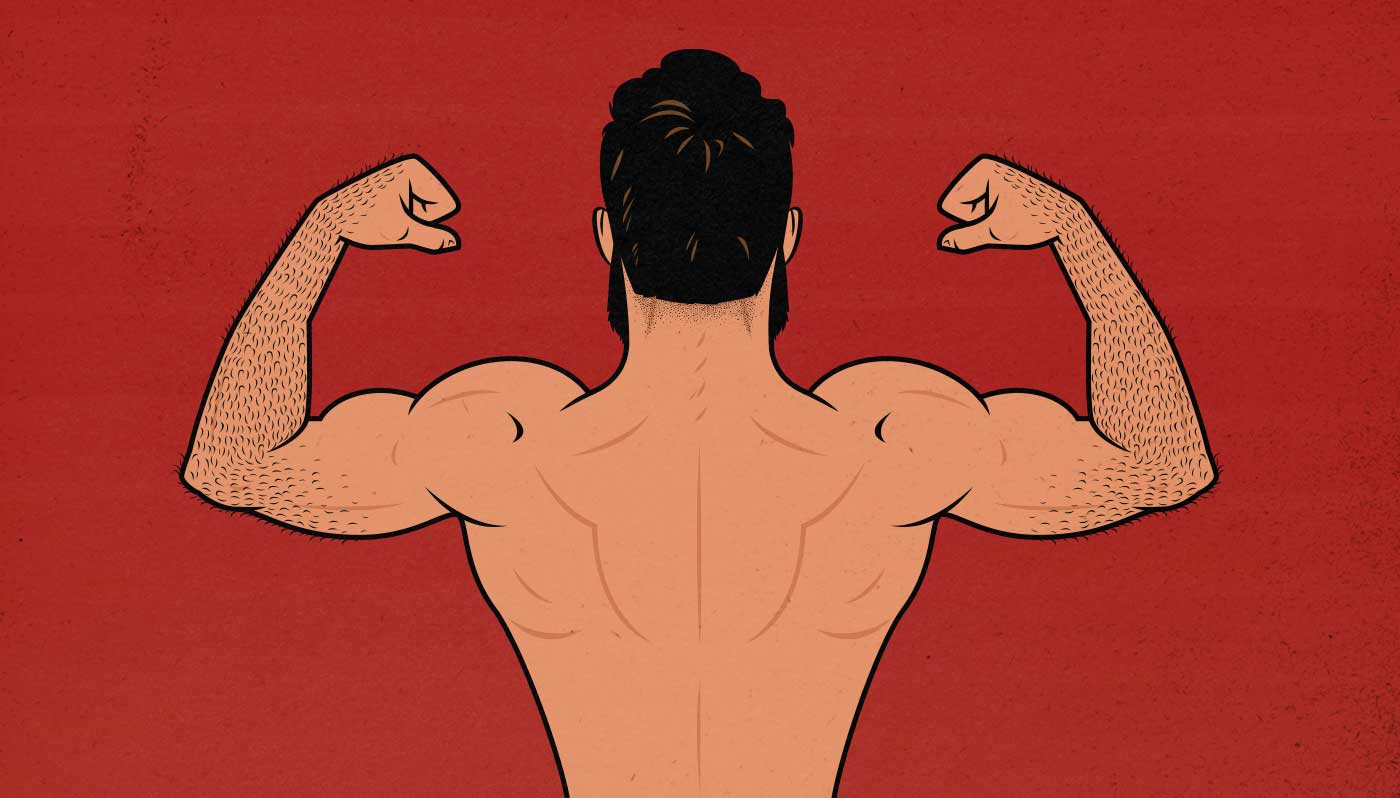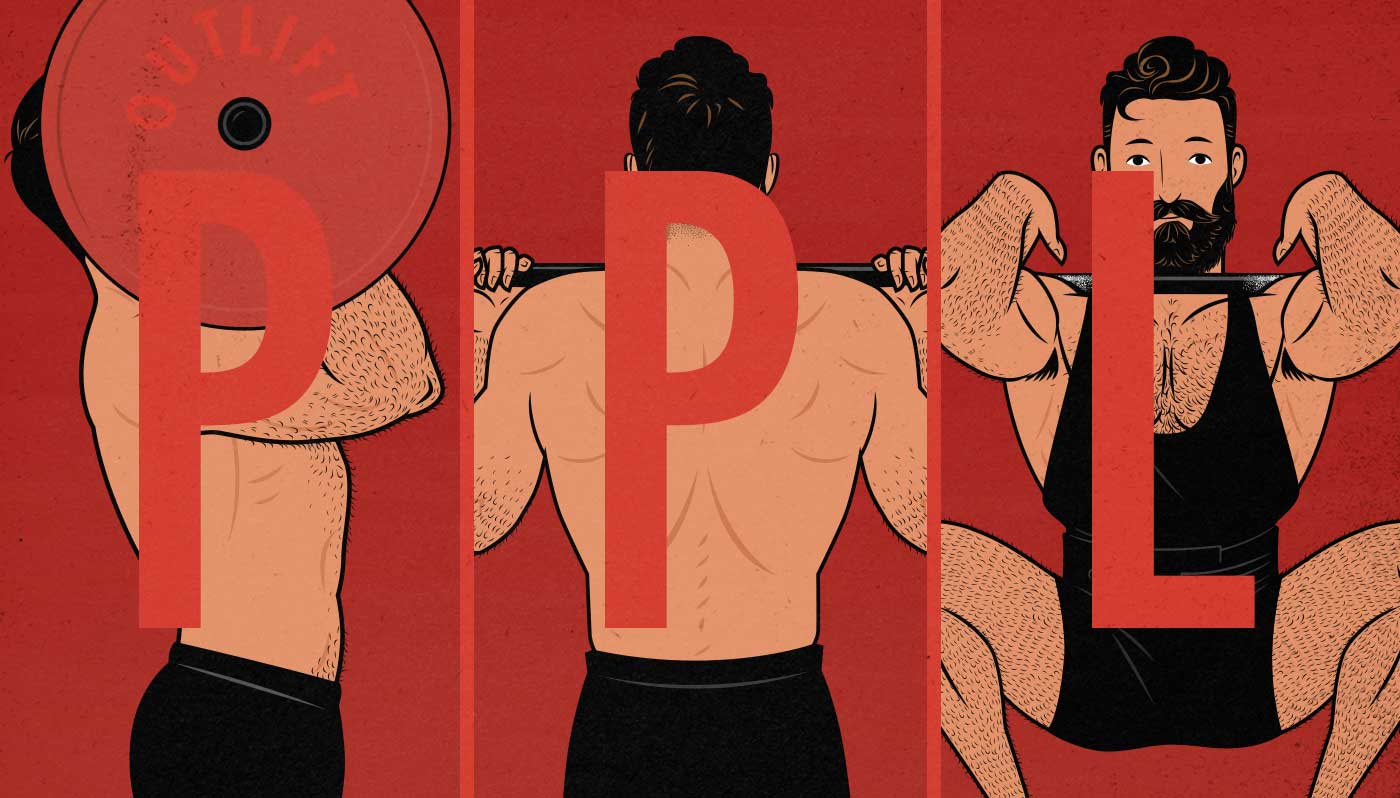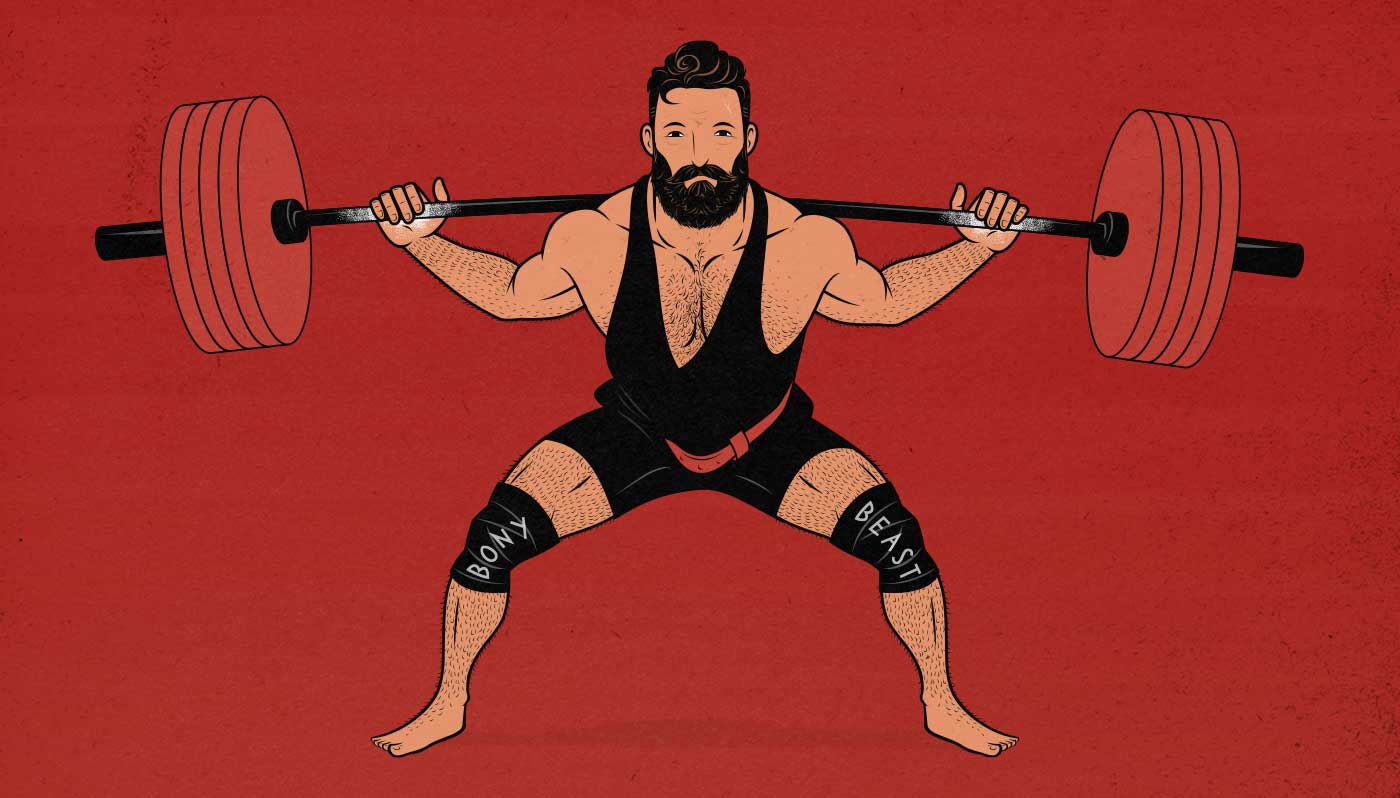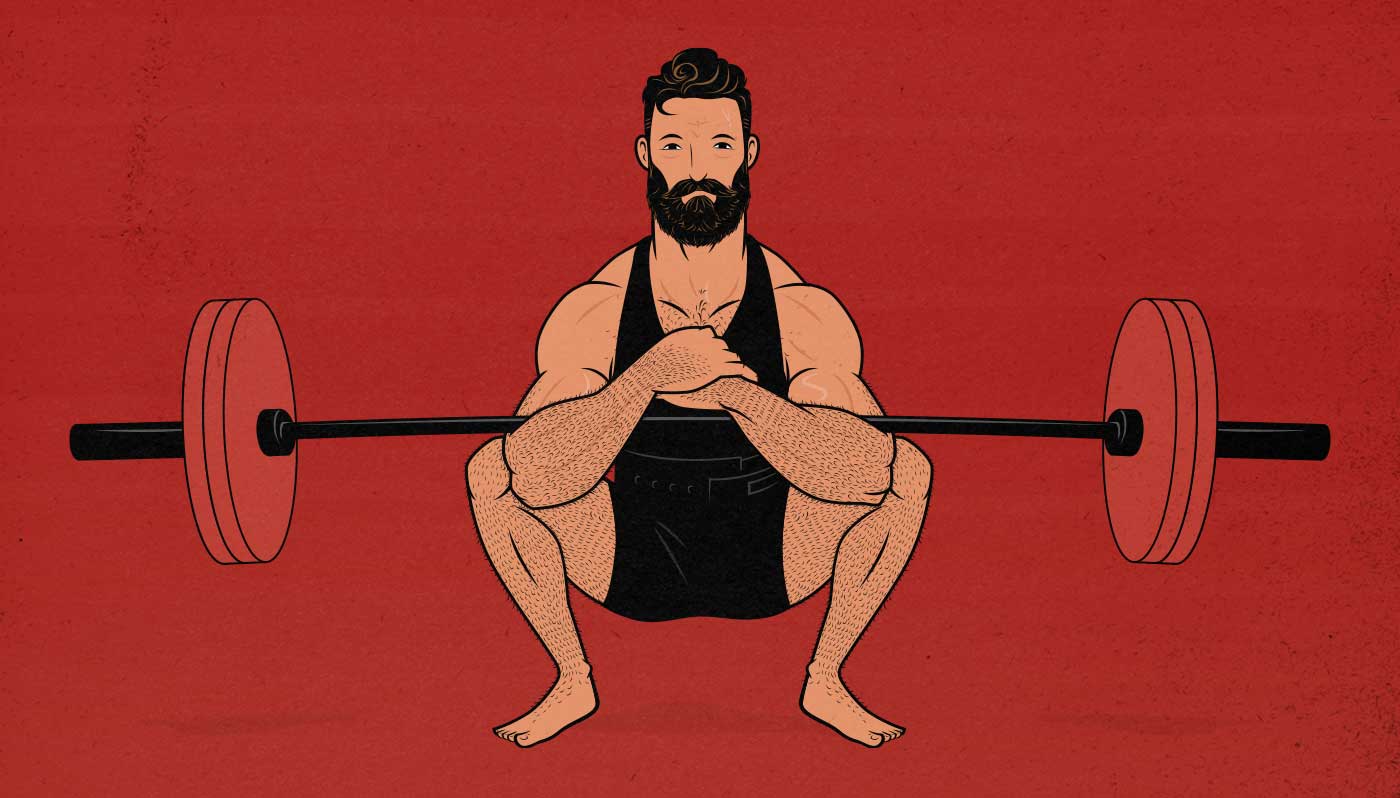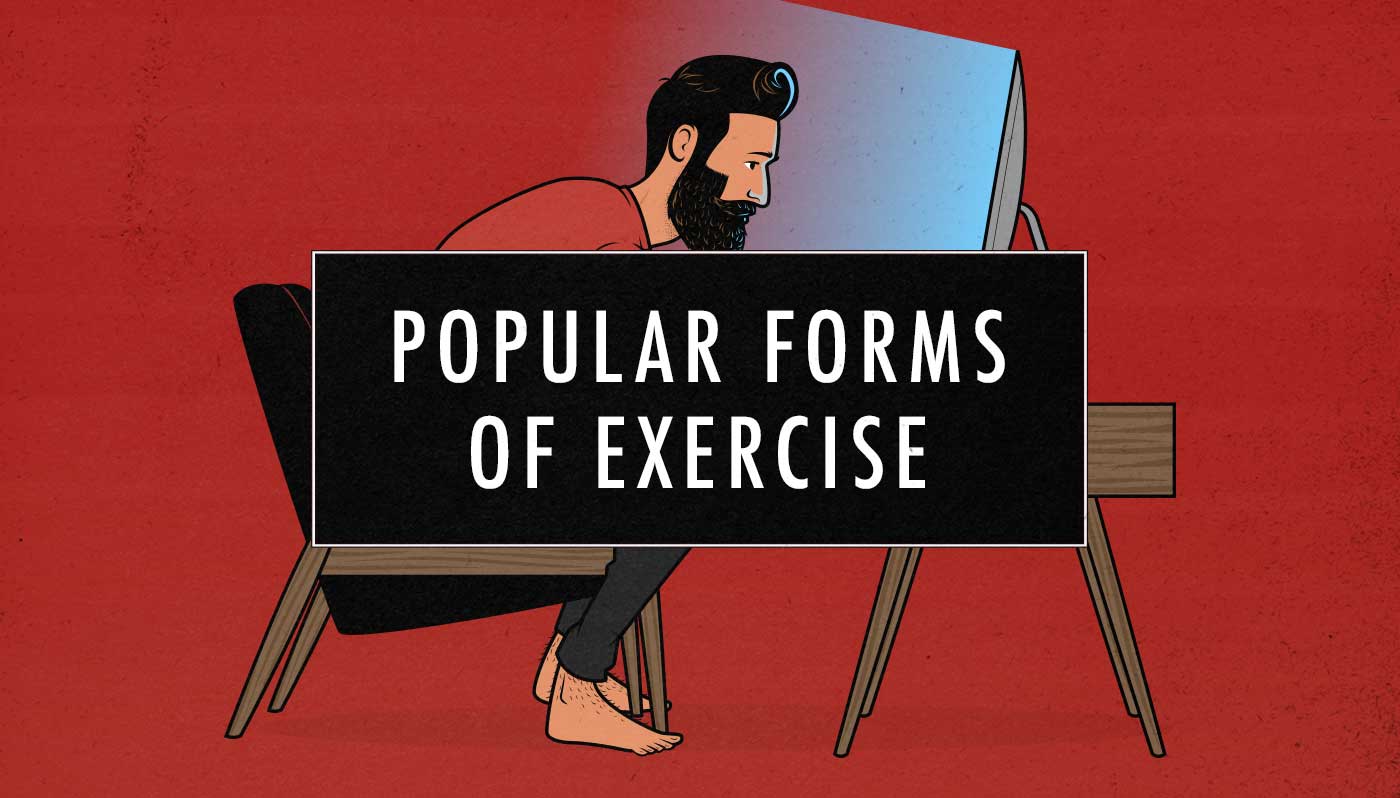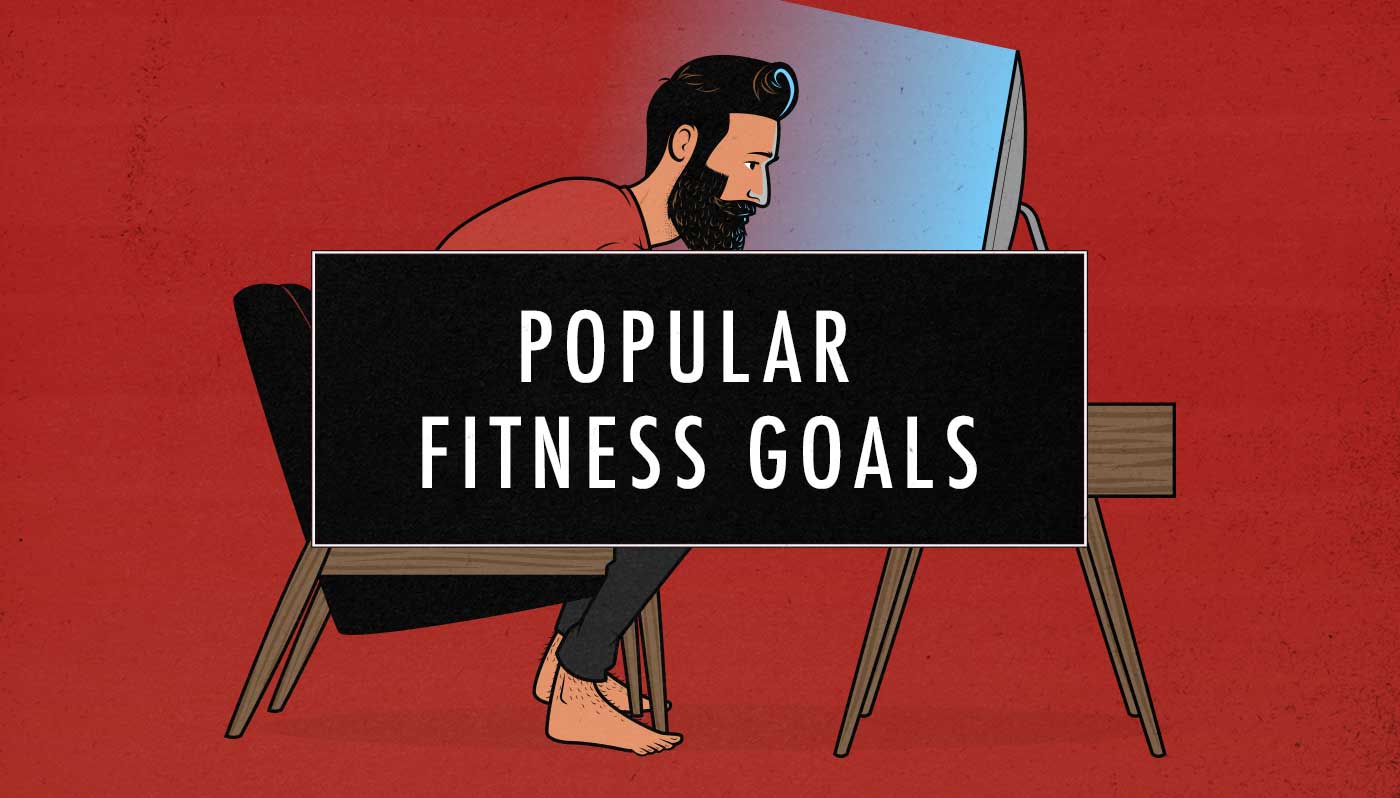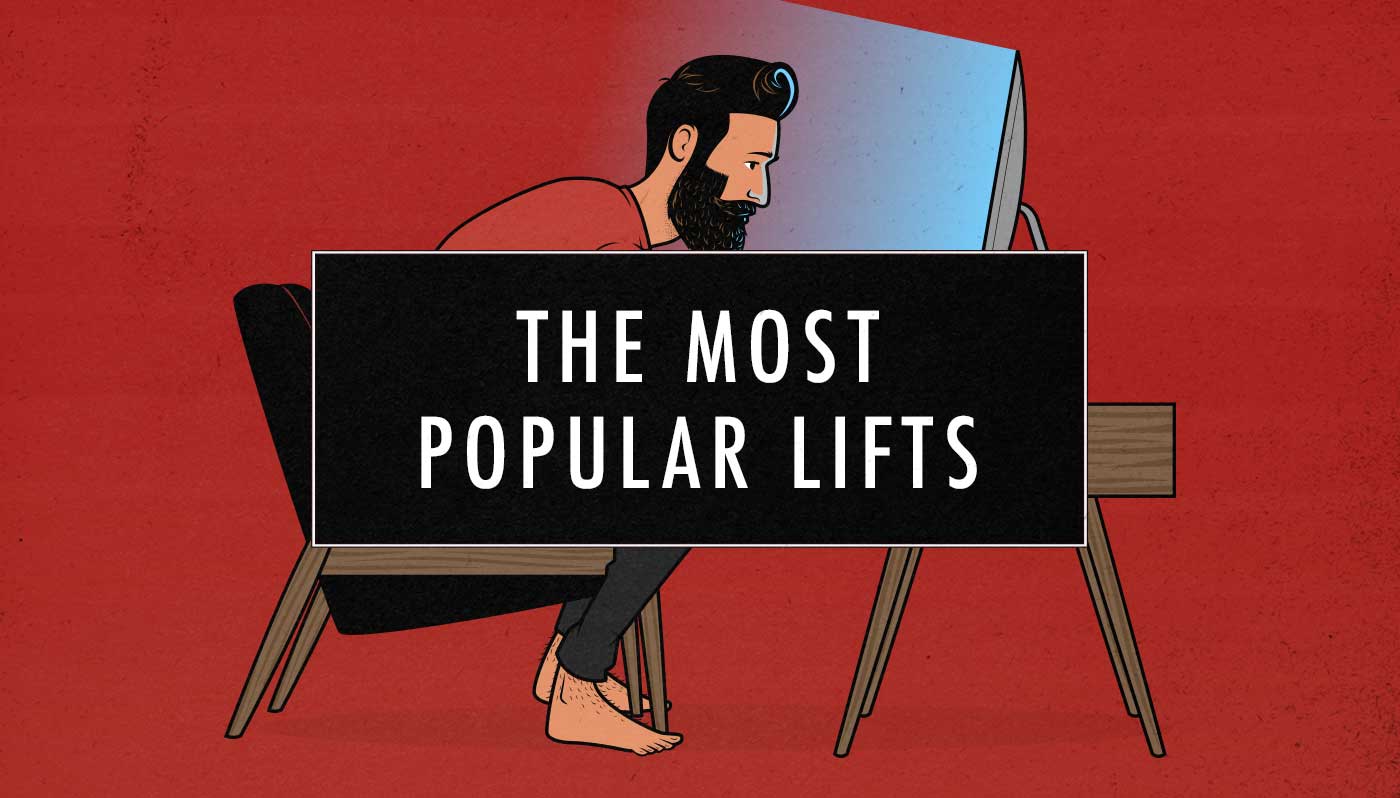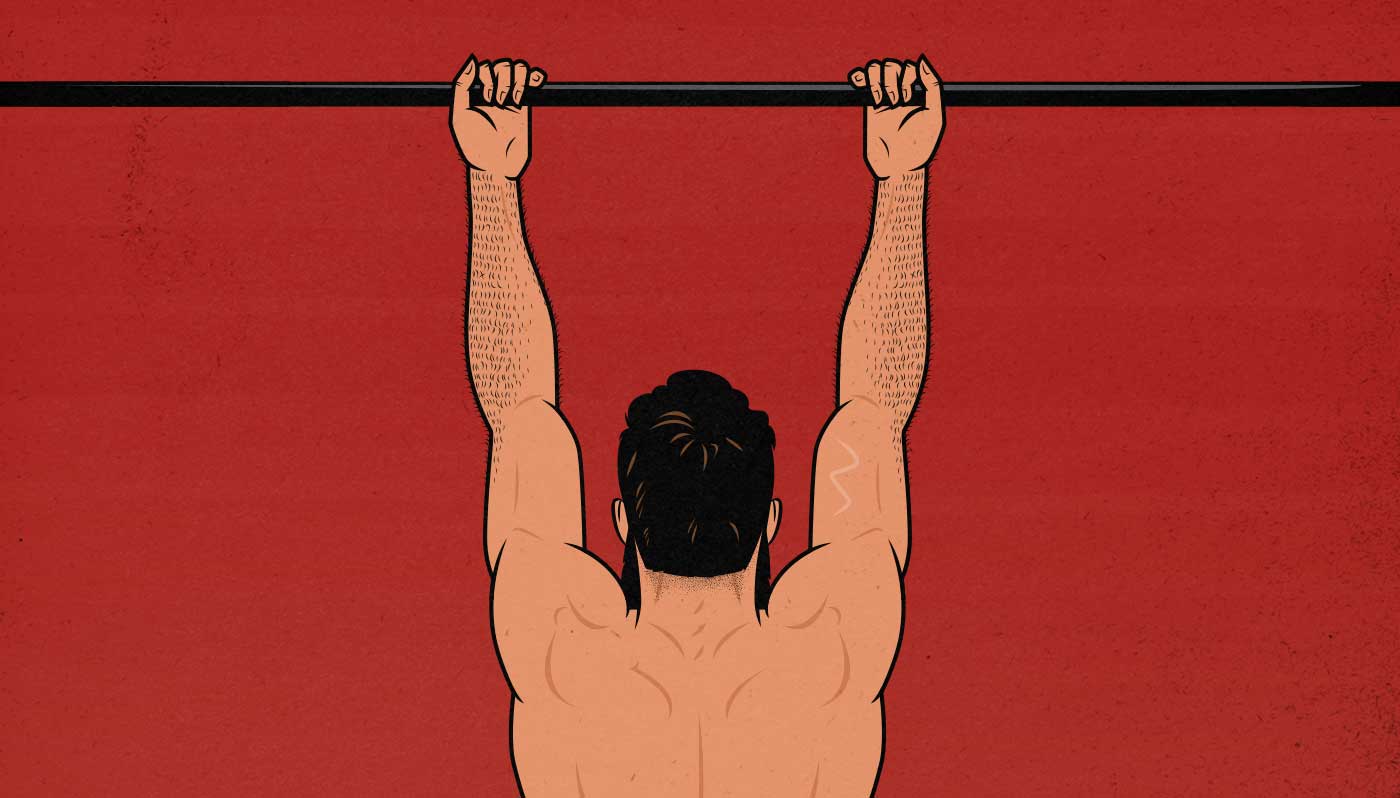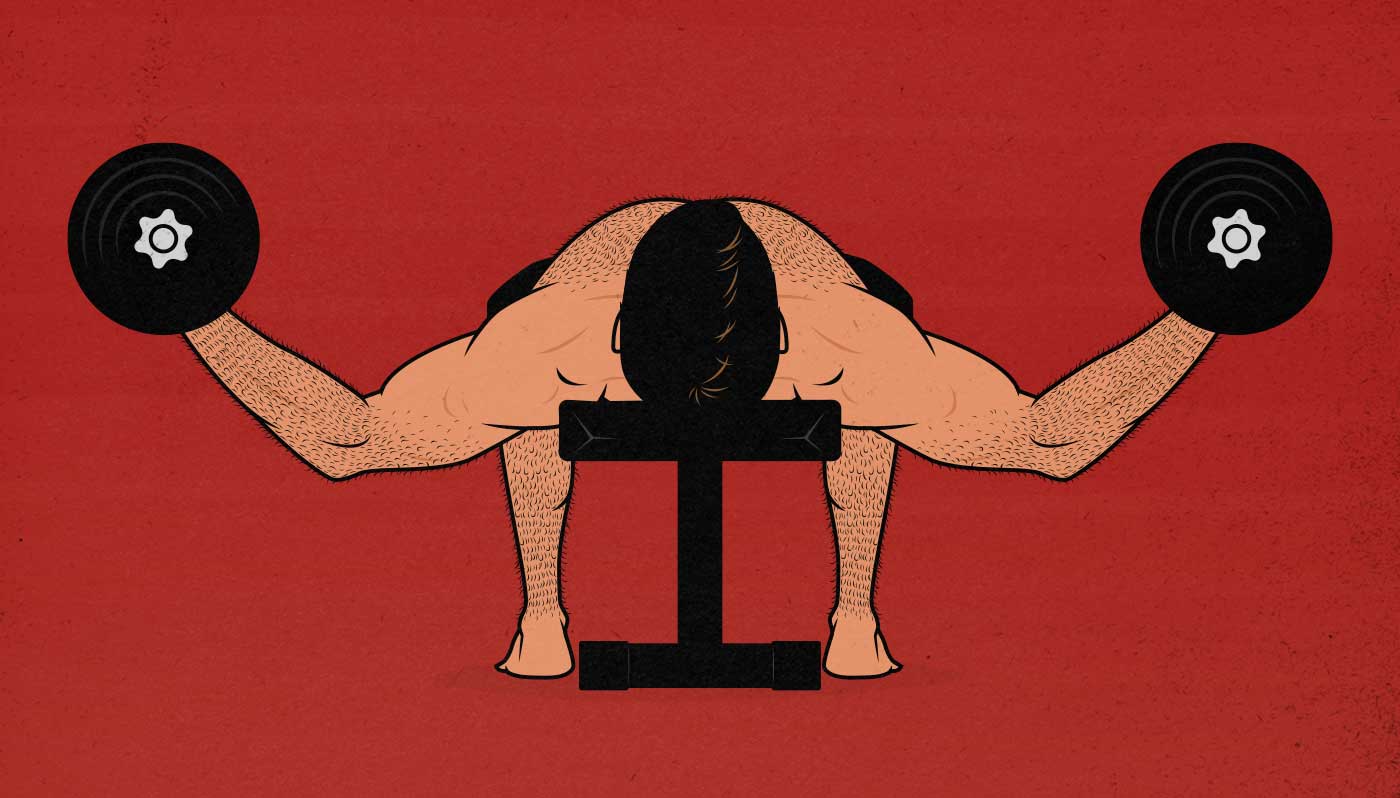Articles
Is Olympic Weightlifting Good for Gaining Muscle Size?
Is Olympic weightlifting good for building muscle? It depends on what we compare it against. Any type of training that challenges our muscles with heavy loads has the potential to stimulate at least a little bit of muscle growth. That makes it quite a bit better than endurance training and cardio for building muscle. But does Olympic weightlifting stimulate a comparable amount of muscle growth to hypertrophy training (aka bodybuilding)?
Delve into the detailsIs German Volume Training (10×10) Good for Gaining Muscle Size?
German volume training (GVT), also knows as the ten sets method, is commonly used during bulking phases as a way to increase muscle growth. But how does it compare against a more traditional bulking approach? Do those extra sets really stimulate extra muscle growth?
Delve into the detailsAre 3-Day Push/Pull/Legs Workout Splits Good for Building Muscle?
Push/Pull/Legs Workout Splits have been a popular way of building muscle for several decades. The 6-day version is beloved by many serious bodybuilders, while the 3-day version is more popular with casual lifters. That’s the version I want to talk about here.
The idea is to hammer a muscle with a variety of exercises, stimulate a maximal amount of muscle growth, and then give the muscle a full week to recover before training it again. Is that the best way to build muscle?
In the past few years, a substantial amount of research has come out comparing push/pull/legs routines against full-body routines. We also have a number of studies looking into how many sets we should do and how often we should train. The findings were surprising.
Delve into the detailsHow to Gain Strength
What’s the best way to develop general strength? We get this question a lot. CrossFit claims to emphasize functional exercises to develop functional strength. Is functional strength a real thing? And does doing functional exercises really improve our general strength?
Strength training sounds like it would be designed to develop general strength, and it certainly can be. However, it’s usually rooted in powerlifting, which is a more specific type of strength. Strength is more than just how much you can squat, bench, and deadlift for a single repetition.
Next, there’s calisthenics offering us mastery over our body weight. If someone is good at push-ups, chin-ups, and planches, they must be strong overall, right? Not necessarily. We also need to be good at lifting and carrying things.
Finally, bodybuilders train to build bigger muscles. They train to look strong, and they are. But they can’t squat as much as powerlifters or do as many chin-ups as novice calisthenics athletes. Why is that? Are their muscles big but weak?
Delve into the detailsThe Hypertrophy Rep Range: How Many Reps to Build Muscle?
How many reps should you do to gain muscle mass? In strength training, doing five reps per set is a popular way to gain mass. In bodybuilding, though, where the goal is to build bigger muscles as fast as possible, most people do sets of 8–12 reps. Which rep range stimulates more muscle growth?
Should we use different rep ranges for different lifts? If doing 5-rep sets on the bench press hurts our shoulders, should we use a higher rep range? If doing 12-rep sets of squats challenges our fitness more than our strength, should we use a lower rep range? And what about compound versus isolation lifts? Should we use lower reps for our compound lifts and higher reps for our isolation lifts?
Finally, what if we want to use a rep range that helps us gain both muscle size and strength? Does that mean we should use a mix of lower and moderate reps? For instance, lifting from 3 reps all the way up to 20 reps per set? Or is it better to use a rep range that’s halfway between strength training and hypertrophy training? For instance, doing 4–6 reps per set?
So, is there a hypertrophy rep range? And if so, what is it?
Delve into the detailsThe Most Popular Forms of Exercise (According to Google)
What type of exercise is the most popular? Then, when it comes to lifting weights, which type of weight training is the most popular? Is bodybuilding more popular than CrossFit? Is CrossFit more popular than powerlifting?
Another thing I was curious about is whether more people were interested in training at home or at the gym. And for people training at home, are they more interested in using a barbell, dumbbells, resistance bands, or doing calisthenics?
To answer all of these questions, we can look at Google Trends to see what information people are looking for online.
Delve into the detailsThe Most Popular Fitness Goals (According to Google)
In this article, let’s look at what fitness terms and goals people are searching for. Are people trying to lose fat or build muscle? When they’re trying to build muscle, are they more interested in gaining size or strength? When they’re trying to gain muscle size, which muscles are they most eager to bulk up?
To answer all of these questions, we can look at Google Trends to see what information people are looking for online.
Delve into the detailsThe Most Popular Lifts (According to Google)
Which lifts are more popular? I’d always kind of assumed that with people who are into strength training, squats would be the most popular, but that with people who are more interested in bodybuilding, the bench press would dominate. Is that true? Which is more popular, the bench press or the squat?
Or what about if we compare squats against deadlifts? Both are big strength training lifts that help people gain a profound amount of muscle mass and general strength. And where does the overhead press fit into all of this? It’s one of the best lifts for improving our appearance and upper-body strength.
What about the barbell curl? Hip thrusts? To get to the bottom of this mystery, I looked up Google search trends over the past ten years to compare and contrast the popularity of the various lifts.
Delve into the detailsWhat is Stretch-Mediated Hypertrophy? A Quick Research Breakdown
For at least a few decades, bodybuilders have been known for favouring exercises that challenge their muscles at long muscle lengths. “Go deep and feel the stretch.” For instance, bodybuilders used the pullover to stretch out their lats (and triceps) under load, ostensibly to help them build muscle faster. The mechanisms weren’t known, and the results weren’t proven, but it was a popular idea nonetheless: to gain muscle faster, train your muscles at longer muscle lengths.
Now the research is starting to validate what the best bodybuilders have known all along. A systematic review of 26 studies found that isometric lifts that challenge our muscles at longer muscle lengths stimulate nearly three times as much muscle growth. For instance, holding the bottom position of a dumbbell fly (with our chests stretched) stimulates more muscle growth than holding the top position of a cable crossover (with our chests contracted). This is a bit counterintuitive because the cable crossover gives a better pump and burn. But it’s the deep stretch that actually builds more muscle.
So, why is stretch-mediated hypertrophy so powerful? And how can use it to build muscle faster?
Delve into the detailsThe Dumbbell Fly Versus the Cable Crossover
One of the more common questions we get is whether the dumbbell fly is a good lift for building a bigger chest. Some have heard that the dumbbell fly is dangerous, others have heard that it doesn’t challenge our pecs enough at the top of the range of motion. Not surprisingly then, a lot of people think that the cable crossover is the better variation, given that it challenges our pecs throughout the entire range of motion and isn’t as hard on our shoulders.
Is that true? If you’re trying to build a big chest, is the cable crossover really better than the classic dumbbell fly?
Delve into the details
